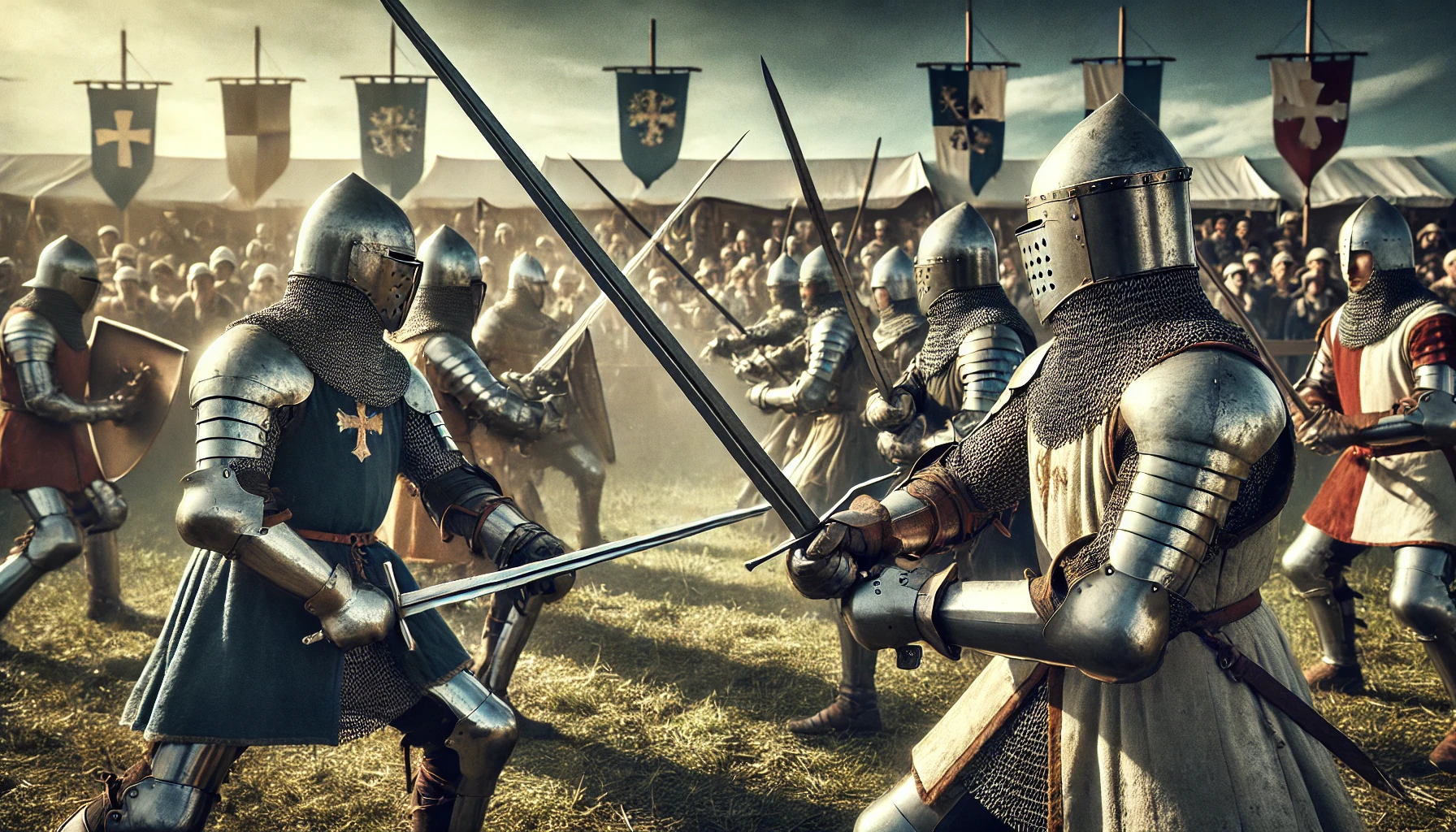
Show combat weapons – perfect for medieval fans, reenactment & stage combat
Stage Combat Weapons: Essential Gear for Reenactment and Historical Fighting
Stage combat weapons are an essential component for medieval reenactment, historical displays, and theatrical combat. They combine authentic design with high safety standards and are specifically designed for intense but bloodless combat. But what should you look for in a stage combat weapon? What are the differences between various swords, axes, and daggers used in staged fighting?
In this article, you’ll learn everything you need to know about stage combat swords, historical fighting techniques, and the best materials for durable and safe replicas.
What Are Stage Combat Weapons?
Stage combat weapons are specially reinforced and blunted weapons developed for use in historical fight shows, medieval tournaments, or film productions. Unlike sharp weapons, they are constructed to avoid harming opponents or damaging equipment—while still looking realistic.
🔹 Blunt blades: No sharpened edges to prevent injuries
🔹 Robust construction: Thicker blades and reinforced tangs (the part of the blade that extends into the handle)
🔹 High-quality materials: Usually made from hardened spring steel (e.g. 5160 or 1065 steel)
🔹 Safe handling: Rounded tips and reinforced guards to protect the hands
These weapons are ideal for historical martial arts (HEMA), LARP (Live Action Role Play), or stage sword fighting.
Types of Stage Combat Weapons
Depending on fighting style and historical period, there are many types of stage combat weapons. Here are the most important:
⚔ Stage Combat Swords
✔ Medieval swords – longswords, arming swords, hand-and-a-half (bastard) swords
✔ Knightly tournament swords – often with large guards for intense combat
✔ Viking swords – wide, double-edged blades with rounded tips
✔ Rapiers & foils – narrow thrusting swords for elegant fencing duels
🪓 Stage Combat Axes & Maces
✔ Viking & Dane axes – especially popular in reenactment
✔ War hammers & morning stars – perfect for late medieval settings
✔ Two-handed axes – impressive weapons for tournaments and battle scenes
🗡 Stage Combat Daggers & Knives
✔ Parrying daggers – often Renaissance-style, used alongside swords
✔ Medieval daggers – authentic companions for knights
✔ Viking seax – the classic Norse dagger
What to Look for When Buying a Stage Combat Weapon
Not every weapon is suitable for stage combat. Here are the key features of a high-quality, safe stage combat weapon:
🔹 Material: Hardened spring steel (like 5160 or 1060) is ideal for its flexibility and resistance to breaking
🔹 Blade thickness: At least 2.5–5 mm at the striking edge to prevent cracks or breaks
🔹 Tang: A full, riveted, or screwed tang provides stability and prevents the handle from breaking
🔹 Balance & weight distribution: Good balance between blade and grip ensures better control in combat
🔹 Safety: Rounded blade tips, reinforced handles, and guards are essential
💡 Tip: Many stage combat weapons are certified according to safety classes—for example, SK-A (full contact) or SK-B (light to moderate contact).
Maintenance & Care of Stage Combat Weapons
To ensure your stage combat weapon remains durable, regular maintenance is key:
✔ Oiling the blade: Prevents rust, especially for carbon steel
✔ Tightening screws: If your weapon has a screwed tang, check it regularly
✔ Proper storage: Keep in a dry place – moisture leads to corrosion
✔ Edge & integrity check: After each use, inspect for cracks or excessive wear
Proper care ensures your weapon brings you joy for years to come—whether on the battlefield or in your display case.
Conclusion: Why Stage Combat Weapons Are Perfect for Medieval Enthusiasts & Reenactors
Stage combat weapons are the perfect choice for anyone seeking authentic historical weapons with maximum safety. Whether for reenactments, medieval tournaments, or fencing practice—they combine traditional craftsmanship with modern safety standards.
🔥 Whether sword, axe, or dagger – Swords and More News brings you the best info on stage combat weapons! 🔥
Frequently Asked Questions (FAQ)
❓ Are stage combat weapons sharp?
🔹 No, they are blunt and rounded to prevent injuries.
❓ Can stage combat weapons be used in real fights?
🔹 They are intended for safe combat simulations, not real fighting.
❓ Which steel is best for stage combat weapons?
🔹 Spring steel (5160 or 1060) is especially durable and flexible.
❓ Can I carry a stage combat weapon in Germany?
🔹 Not in public, but ownership is allowed for events, reenactment, or training.
Let me know if you want this adapted for a website, brochure, or social media post!